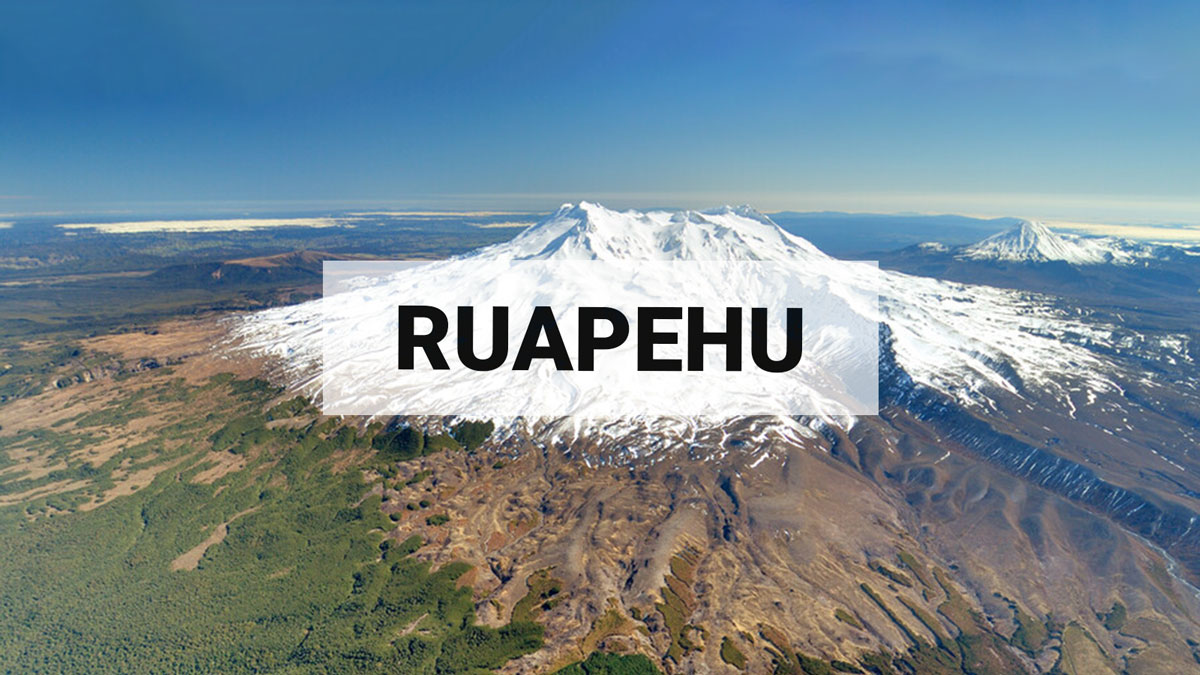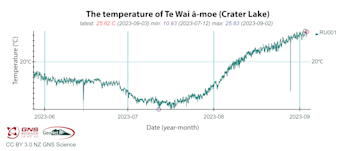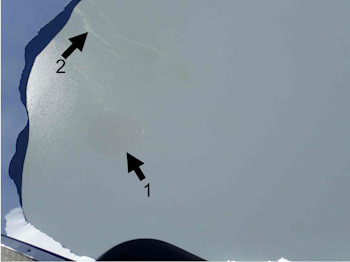
Te Wai ā-moe (Crater Lake) is now heating at Mt Ruapehu. Volcanic activity remains low, and the Volcanic Alert Level remains at Level 1.
Te Wai ā-moe (Ruapehu Crater Lake) is into another heating phase, and has reached 26 °C, rising from a low of 11 °C in July. Other monitoring indicators remain within normal ranges for such a heating episode. Volcanic activity remains low. The Volcanic Alert Level remains at Level 1 and the Aviation Colour Code at Green.
Since mid-July the temperature of Te Wai ā-moe (Crater Lake) has shown a heating trend, rising from 11 °C to 26 °C today (Figure 1). When the lake started heating the heat flow into the lake initially increased to around 300 MW and is now about 200 MW.
The lake can experience temporary drops in temperature due to some occasional input of snow melt and heavy rainfall into the lake, especially during bouts of warmer weather (such as the ~10 °C spike on 28 August in Figure 1). But these short-term variations do not affect the long-term heating or cooling trends.
Water samples were collected from the lake on August 23, 2023. Analyses of fluids and gases in these samples are within the range previously measured at Ruapehu. In addition, gas isotope data suggests the lake heating episode is being driven by new magma deep in the system, which is expected at the start of heating episodes. Volcanic activity in the Crater Lake is indicated by areas of upwelling (discoloured water, labelled 1 in Figure 2) and yellow sulphur slicks (labelled 2) on the lake surface (Figure 2).
The level of volcanic tremor recorded by our seismic equipment has remained weak during 2023, while a few earthquakes have been located beneath the volcano. Our new scanDOAS gas scanning equipment continues to measure lowto-moderate levels of SO2 gas output most days during the month, indicating volcanic gases are flowing through the volcano.
The rise of lake temperature is consistent with past heating episodes at Mt Ruapehu and continues to produce a low level of volcanic activity in the lake. This is supported by the current low levels of volcanic tremor, the very small changes in lake chemistry, and low-to-moderate levels of SO2 gas output. As a result, the Volcanic Alert Level remains at Level 1. The Aviation Colour Code remains Green.
Mt Ruapehu is an active volcano and has the potential to erupt with little or no warning when in a state of minor volcanic unrest.
Volcanic Alert Level 1 indicates the primary hazards are those expected during volcanic unrest: steam discharge, volcanic gas, earthquakes, landslides, and hydrothermal activity. While Volcanic Alert Level 1 is mostly associated with environmental hazards, potential for eruption hazards also exists and eruptions can still occur with little or no warning. Volcanic Alert Levels 3, 4 and 5 are reserved for eruptions with varying impact distances.
For information on access to the Mt Ruapehu area, please visit the Department of Conservation’s website on volcanic risk in Tongariro National Park and follow the DOC Tongariro Facebook page for further updates.
For information about responding to volcanic activity there are guidelines from the National Emergency Management Agency.
GNS Science and its National Geohazards Monitoring Centre continue to closely monitor Mt Ruapehu for further changes.
Cameron Asher
Duty Volcanologist
Media Contact: 021 574 541 or media@gns.cri.nz




